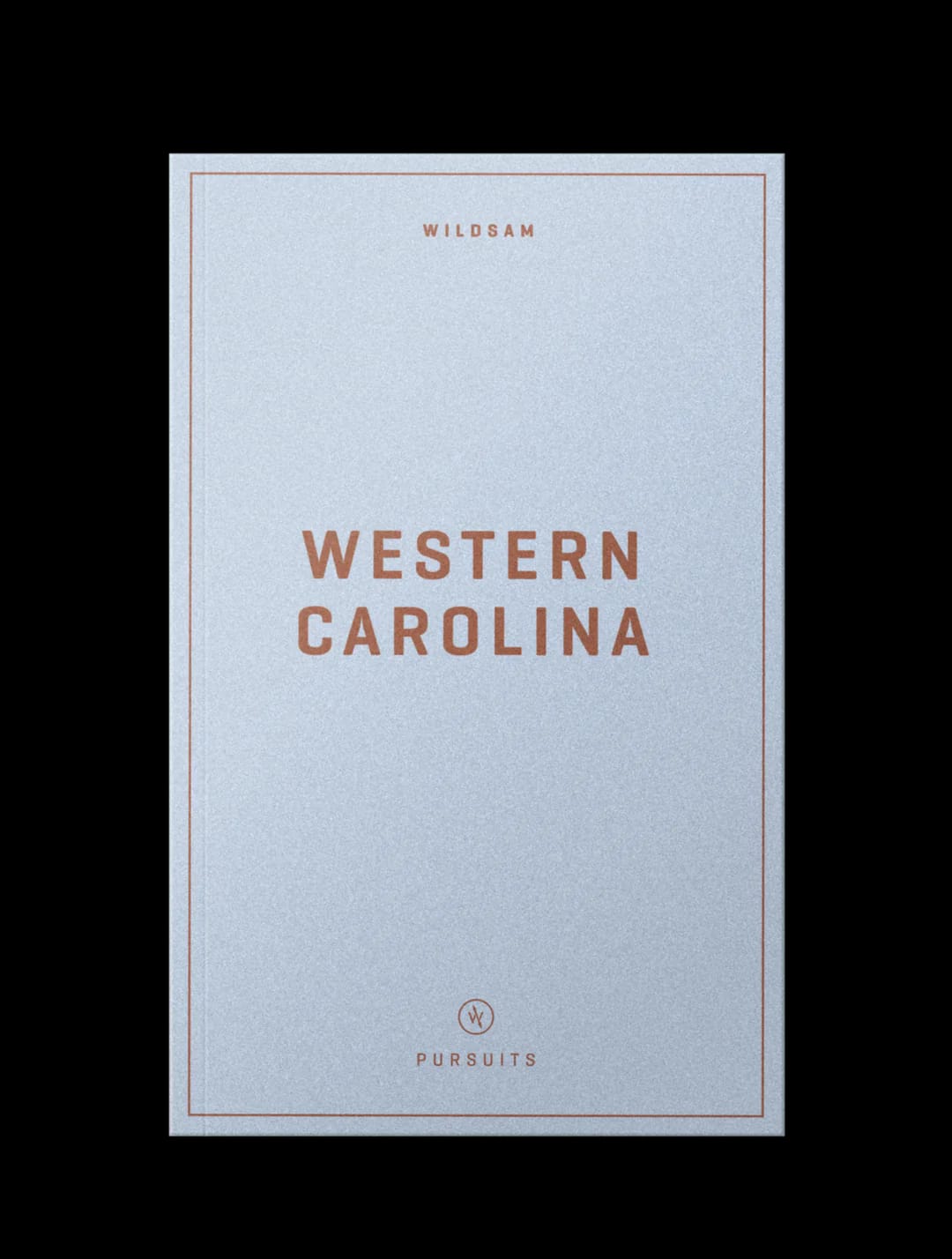East Fork Pottery’s Founder Talks Craft, Culture and Carolina

East Fork Pottery
Alex Matisse traces his company’s origin story and Asheville life after the hurricane.
Even if you’ve never sipped coffee directly from an East Fork Pottery mug (“The Mug”), you live in a long moment shaped by the Asheville, N.C.-based brand’s aesthetic. Rich colors, elegantly brawny forms, earthy and simple but elegant: the company’s signature style, with roots running through North Carolina’s craft culture and international pottery traditions, has become a defining look of well-chosen tableware and drinking vessels. In a time of placeless Insta-brands and disposable product, East Fork’s identification with Asheville and on-its-sleeve dedication to quality have elevated the brand, making it one of those outfits other companies aspire to emulate, if not imitate.
When Wildsam got to work on our new field guide to Western Carolina—a craft- and art-steeped mountain state of mind centered in Asheville—East Fork was one of our first calls. Founder and CEO Alex Matisse kindly sat with us a couple of times to lead us deeper into the company’s story. The timing proved fateful in some ways, as East Fork and its whole Carolina community took the tragic hit of Hurricane Helene, and the long story of collective recovery began. In a brighter, happier sense, the timing is interesting, as East Fork is busy as ever, launching its new Matisse Collection. Alex is the great-grandson of pathbreaking French modernist painter Henri Matisse, and this set of sprightly plates, bowls and a special blue Mug creates a past-future moment of family and artistic heritage.
Our Western Carolina book features an interview with Alex, and we recently caught up with him to follow a few more threads of backstory and hear about life and craft after the storm.

WILDSAM: How would you explain the connection between East Fork and your part of North Carolina?
ALEX MATISSE: I moved to North Carolina to go to Guilford College in Greensboro, which was just pure fate. I was miserable first semester, then I talked my way into the ceramics program. Clay was always my medium, since I was really little. And I dropped out a year and a half later to work for a potter named Matt Jones in Asheville. Matt worked with Mark Hewitt, a potter who had moved down from Connecticut. He, in turn, had apprenticed with an English potter named Michael Cardew, and Michael Cardew had apprenticed with an English potter named Bernard Leach who is very, very important in the pottery canon. Leach looked a lot to Japanese and Korean ceramics.
It's a whole school of making. There are all these potters who have worked for each other, and apprenticed with each other, and they have had apprentices. A lot of threads of connection.
I worked with Matt, and then I went and worked with Mark, for what he called finishing school. And then I moved back to Asheville. I liked the mountains. It was a cool, groovy little town. And I had some friends there. North Carolina was important because there are collectors here.
I was about to ask: How does this ecosystem sustain itself?
There are hundreds and hundreds of potters in this state. In Seagrove, North Carolina, south of Greensboro, there are about 200 potteries. In the mountains, you have lots of other potters. You have Penland School of Craft, which has influenced and nurtured a tremendous number of potters. So you've got all these people making things.
Then, you do have a huge number of collectors in the state. They get to know you. They come out to the kiln sale. So the model was very easy to follow: Find a rural piece of property, build a big wood kiln, build a rudimentary workshop, and start making pots. And that's how we did it in the early days. We would make pots for a few months, and then we would send out our postcards.

Western Carolina
Mountain towns and arts hotbeds, highland retreats and hidden city gems, river guides and thru-hikers, craft masters and chefs

So how did East Fork build from there to being a nationally recognized brand?
Henry Glassie is a folklorist that has been very influential for me and a number of other people. And he said something like, "You have one hand outstretched to the past, and one to the future."
There were a few conversations happening in the pottery community. We were hearing a lot of collectors say, “I’ve got no more space on my shelves.” And we didn’t necessarily see a younger generation of collectors coming along.
We started to see ceramics having this moment outside of North Carolina, outside of these traditional pottery collectors. It was the early days of Instagram. We wanted to be part of the conversation of our generation. The work started to get more simplified. We hatched this little business plan, and then we bought a small gas kiln.
We sent out a postcard with the new work. Bright colors, simple, i plain, photographed in this very kind of hip, cool way. And basically, nobody showed up. That first kiln opening, I don't know how much we ended up selling, but the first person didn't show up until 11. And normally people are there at 8 or 8:30, waiting in line. And so that was kind of inauspicious start, but it did turn around. We opened our little store. We had the vision, and we just kept pushing.
How would you say the relationship between East Fork and the community has evolved since then?
A lot of our focus within the community is weighted less towards, let's say, the craft community, but towards supporting grassroots organizations and nonprofits. Through that program, which my wife Connie set up, we continue to raise a tremendous amount of money for organizations doing phenomenal work. After Helene, we did bring a bunch of local folks into the Asheville store—people were shopping like crazy to support Asheville makers. So we're still very connected.
What have the hurricane and the larger story around the region’s recovery taught you about the place?
It didn't really surprise me, but everybody certainly got together. There's a real spirit about the place. You had people forming brigades, bringing water around to folks. These things really do bring people together, and all the sort of petty stuff falls away.
Now in Asheville, it's spring, the leaves are coming out. It was a very long, gray winter. But now things are greening up. I think the big question for everybody here is if and when tourists will return, and in what numbers. Everybody’s still kind of holding their breath to see what's going to happen. The recovery is a long-term thing. There are so many different elements to it.
Wildsam’s field guide to Western Carolina is available now. Visit East Fork online and at its Asheville shop, 15 W Walnut St.




